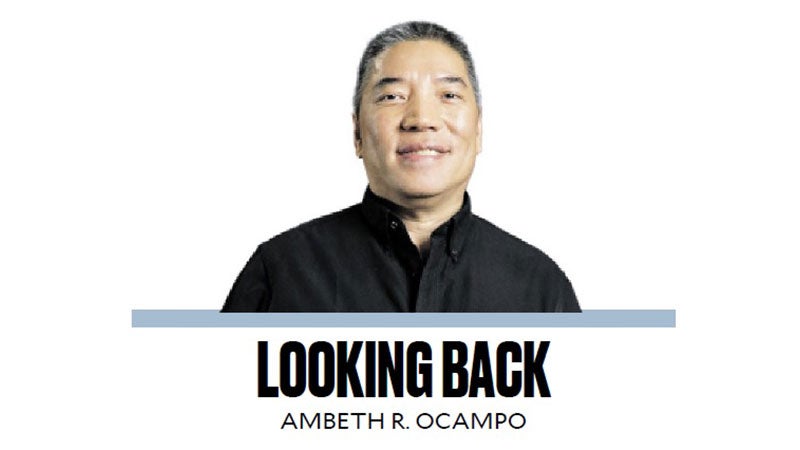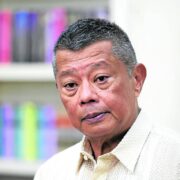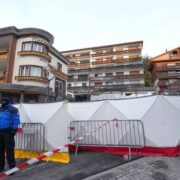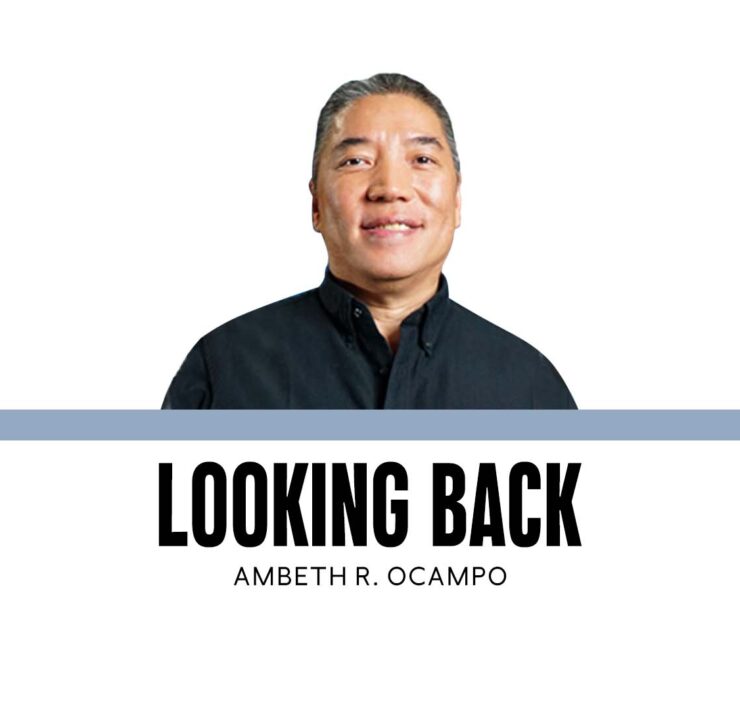‘Baybayin,’ not ‘alibata’

Classroom history taught me that pre-Spanish syllabary was called “alibata.” By the time I started teaching, I was told the correct term was “baybayin.” Whoever coined alibata used the first three letters in Arabic: alif, baa, and taa. While there have been attempts over the past century to revive the use of baybayin, these were not successful. My students know how to read baybayin, some can even write their names in baybayin. When I am generous in a difficult exam, simple questions are given in baybayin for a hefty bonus.
From the cradle, Filipinos are taught to read and write in the Roman alphabet. The few times I see baybayin in use in young people, it is either drawn on their skin with henna on a beach or made permanent with a tattoo. Retired Filipino-American mixed martial artist Brandon “The Truth” Vera has baybayin tattooed on his back. From online photos I can read the words: “mun-do” (earth), “hangin” (wind), “a-poy” (fire), and “to-big” (water). Vera’s back reminded me of three famous archeological artifacts preserved in the National Museum with writing on them: the Calatagan Pot, the Laguna Copperplate, and the Butuan Silver Paleograph. In recent years, other artifacts have turned up like a sherd from an earthenware vessel excavated in the San Ignacio site, Intramuros, and the so-called Monreal or Ticao Stones from Masbate that are currently being studied.
A declared National Cultural Treasure, the Calatagan Pot is an earthenware jar with baybayin etched on its shoulder. My only problem with it is that it was not archeologically retrieved, rather it was acquired from a treasure hunter in 1961. Since the pot cannot be studied in relation to other objects that were found with it, we have lost its archeological, historic, and ethnographic context. Calatagan was the site of an important archeological excavation at the time, and if you give the Tagalog placename a second look, you will find the verb “latag” (to lay flat). Therefore, “ca-latag-an” means a place where things were laid flat, it is a reference to a pre-Spanish burial ground. Excavated graves were found with “pabaon” (farewell presents) that the soul brought to the afterlife. Much of the pabaon found with the human remains were Ming period (1368-1644) porcelain, mute witnesses, or traces to regional and interisland trade antedating the Spanish conquest in the 16th century. The Chinese and Sawankhalok (Thai) ceramics date the Calatagan site to the 15th century.
Writing on the shoulder of the Calatagan pot has been the subject of a lot of debate since 1961. Should we read the baybayin characters on the pot from left to right or the other way around? Do the letters form words and phrases or are these shorthand or code for something else? The first attempt at a reading was by Guillermo Tolentino, National Artist for Sculpture who was also an authority on the baybayin having published the monograph “Ang Wika at Baybaying Tagalog” (1937). Tolentino could not sight-read the pot so he copied it out and returned much later with a reading that was not propagated because Tolentino resorted to something better than artificial intelligence. Stumped by the inscription, he organized a séance in his home, conjured the spirit of the person who made the pot and took down the message.
Tolentino’s work on baybayin is fascinating. He drew out of a table of the different letters and attempted an analysis or etymology of each symbol. For example, “la” is the first letter of the world “lalake” (man), when drawn it resembles a penis hanging under testicles. “Ba,” the first character in “babae” (woman), is shaped like an inverted heart. To Tolentino, this resembles the female genitals. Tolentino drew the baybayin character for “nga” like the heard of a carabao that makes the sound, “Ooo-nga!” The baybayin equivalent of the letter “O” Tolentino drew in the shape of a baby’s mouth whose sound or first cry, before it learns to speak, is “Ooooha!”
Baybayin was in use in the islands before the Spanish conquest, and continued to be used till the 17th century. Spanish notarial documents with baybayin signatures are preserved in the University of Santo Tomas archives. One from 1613 refers to the sale of “tubigan,” or an irrigated land, that was sold by Catalina Baycan, a “maginoo” or a leading citizen of Tondo, to Andres Capiit of Dilaw. Dilaw was then close to the Manila City Hall. “Dilaw” means “yellow,” and we are told that it referred to turmeric. So the name Dilaw is probably something that was either grown or sold in that area. Another, from 1625, refers to the sale again of irrigable land in Mayligi, a place around Sta. Cruz, Manila. Maria Silang, a maginoo of Tondo, sold it to Francisca Longgad, a maginoo from Dilaw. Another document from 1665 in the Academia Real de Historia in Madrid is a petition from Mindoro signed in Roman and baybayin characters.
From the Spanish galleon Nuestra Señora de la Concepción that left Manila in 1638 and was shipwrecked in Guam, 156 archeologically intact storage jars were found. Twenty-one of the jars had shipper’s marks carved on them, some in baybayin. When did Filipinos stop using baybayin to sign their names? Did they write more than names in baybayin?
Comments are welcome at aocampo@ateneo.edu
Ambeth is a Public Historian whose research covers 19th century Philippines: its art, culture, and the people who figure in the birth of the nation. Professor and former Chair, Department of History, Ateneo de Manila University, he writes a widely-read editorial page column for the Philippine Daily Inquirer, and has published over 30 books—the most recent being: Martial Law: Looking Back 15 (Anvil, 2021) and Yaman: History and Heritage in Philippine Money (Bangko Sentral ng Pilipinas, 2021).

















